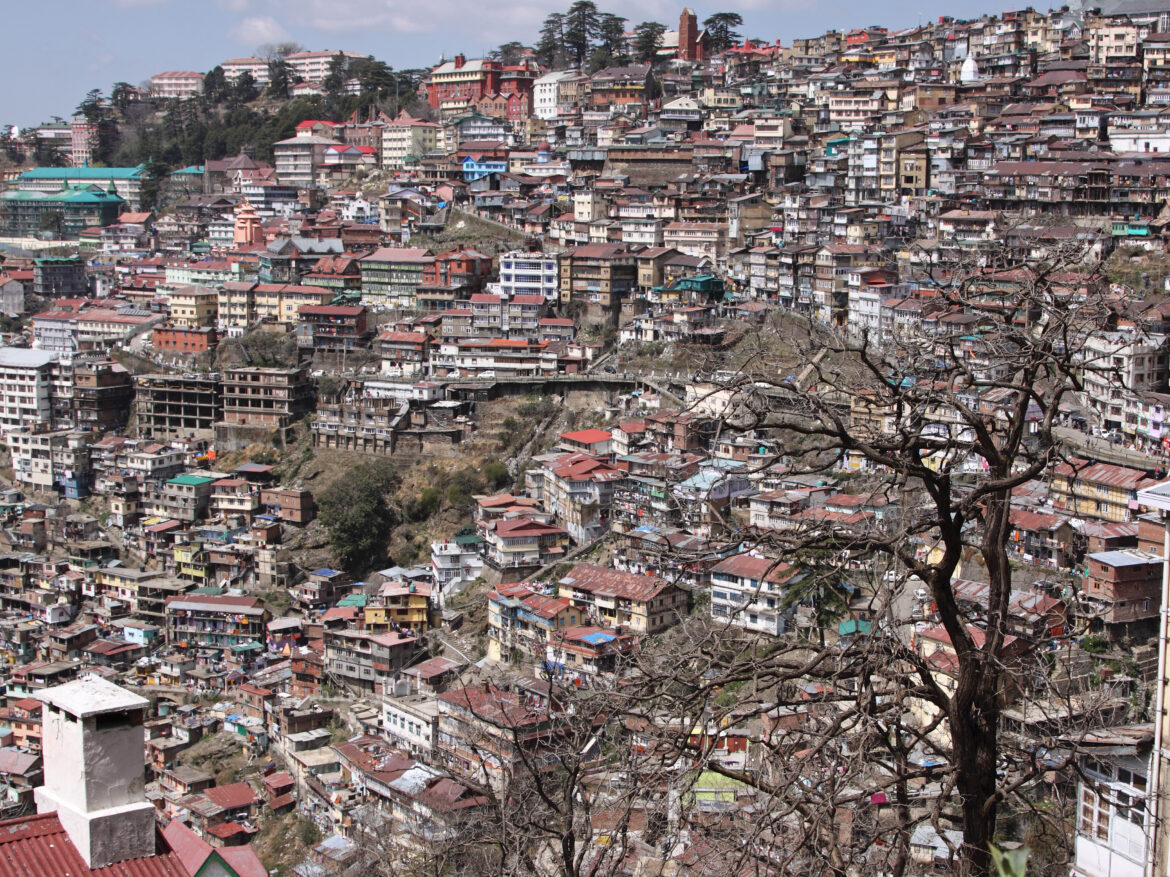Introduction
Cities have a tendency to grow at different rates, and not uniformly. The question arises as to why some cities grow faster than others, even after countries have become highly urbanized. The demographic transition of most countries is characterized by a shift in population from rural to urban areas. At the start of the twentieth century, slightly over 10% of the world’s population lived in urban areas. By 1950, that figure had risen to almost 30%, and by 2000, it was estimated that approximately 47% of the world’s population was located in urban areas (United Nations, 1980 and 2000).
Recent projections show that urban populations are growing at a slower rate than previously anticipated. A comparison of projections made in the late 1970s and more recently indicates a downward revision of nearly 10% in the annual rate of growth of urban populations between 1975 and 2000. This slower growth is expected to postpone the achievement of 50% of the world’s population living in urban areas to 2007 or 2008, rather than the originally projected year of 2000.
Growth of Cities
Transition from hunting and fishing to agriculture: During the Neolithic Age, a transition occurred where groups of hunters and gatherers started settling into more permanent dwellings. These dwellings were meant to last longer than a single season, marking the beginning of rural settlement. As a result, the population increased significantly, estimated to have grown from a mere few million to many million.
Emergence of cities: The first cities appeared in Mesopotamia (Iraq) around 3,500BC. Urban settlement gradually spread to the Nile Valley (Egypt), the Indus Valley (Pakistan), and later to the Hoang-Ho Valley (China). Urban areas required more organized social bodies, and they permitted higher standards of living. Record-keeping became necessary as a supplement to human memory, leading to the development of written languages. Recorded history began with the establishment of cities. This form of civilization lasted for over 5,000 years, until approximately 200 years ago. However, a significant portion of the population of various countries and the world in general lived in rural areas, rather than in cities.
Age of urbanization: Currently, a significant portion of a nation’s population and even the world’s population (potentially over 50%) resides in cities. This trend emerged during the industrial revolution, when advancements in science, technology, and machinery enabled the construction of vast cities capable of accommodating high-density populations.
Urbanization
Urbanization is the shift of population from rural to urban areas. This results in a decrease in the proportion of people living in rural areas. Societies adapt to this change. Developing countries are experiencing rapid urbanization as they adapt to the new world. The world’s cities are growing because people are migrating from rural to urban areas. They seek jobs, opportunities to improve their lives, and create a better future for their children.
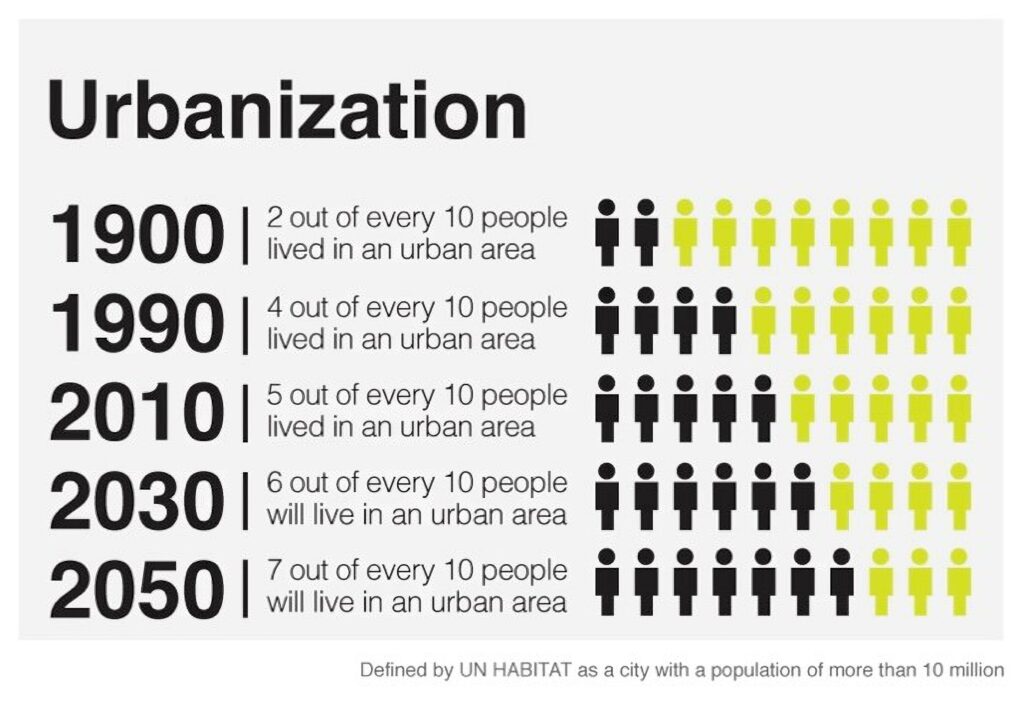
It is predicted that by 2050, over two thirds of the global population will reside in cities, up from roughly 54 percent currently. Cities create wealth, generate employment and drive human progress. While we acknowledge the numerous advantages of well-structured and effective cities, we must also acknowledge the rapid and frequently unplanned urbanization, which poses significant risks of social instability, critical infrastructure damage, potential water shortage, and the potential for catastrophic disease spread. These risks are likely to increase as the unprecedented shift from rural to urban areas persists.
Urbanization in Developed Countries
Before 1950, urbanization was mainly observed in developed countries. The period of industrialization in Europe and North America during the 19th and early 20th centuries saw rapid urbanization.
The growth of industries in large towns and cities led many from rural areas to move towards urban areas in search of employment opportunities. However, since 1950, urbanization has slowed down in most developed countries. In fact, the largest cities in these countries are witnessing a decline in population as people are shifting towards rural environments. This phenomenon is known as counter urbanization.
Urbanization in Developing Countries
In the 1950s, many colonies gained independence and became developing countries. These countries are mainly located in South America, Africa, and Asia. Since then, urbanization in these countries has grown rapidly. From 1950 to 1990, the urban population in developing countries doubled while it was less than half in developed countries. Despite being mostly rural, the developing world already has over one-third of the world’s urban population and some of the world’s largest cities.
Urbanization in these countries is primarily caused by two factors:
Firstly, rural to urban migration is occurring on a massive scale due to population pressure and a lack of resources in rural areas. The push factors outweigh the pull factors, as people in rural areas are drawn to the city in the hopes of a better standard of living, well-paid jobs, and better access to healthcare and education.
Secondly, natural increase is due to a decrease in death rates, while birth rates remain high.
Projection 2050
From the given charts, it can be seen that almost ten countries account for 75% of the Annual Population Increase in the world. There are three charts showing the annual population increase in three different timeline: 1950-55, 2010-15 and 2045-50 (projected).
Annual Population Increase: 1950-55
In 1950-55, Asia alone held most of the global population and included the seven most populous countries of the world. It can be seen from the graph that China had the highest annual population increase with 10.9 million increase annually. This was incredibly high compared to the rest of the nations, including India, which was the next country with highest annual population increase. Two North American countries, i.e., USA and Mexico were also seen in the 3rd and 8th position respectively and one South American country, Brazil was seen in the 4th position with annual population increase up to 1.6 million.
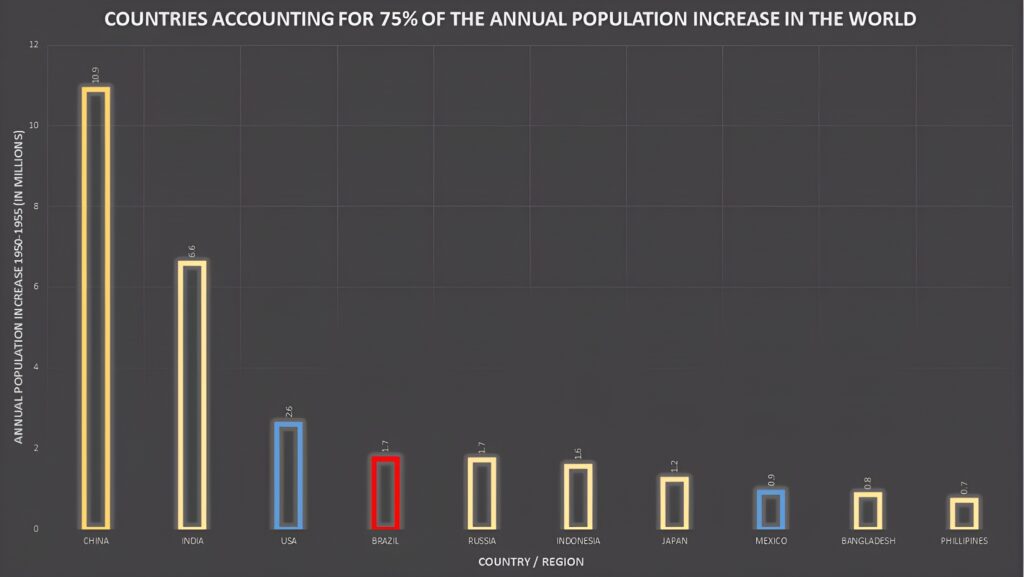
Another observation that could be drawn from the above graph is that the annual population increase of China was so high that it equaled to the total population increase of countries from 3rd to 10th position (i.e., USA to Philippines = 11.2 million)
Annual Population Increase 2010-15
After a gap of 60 years, it can be seen that India’ annual population was increasing annually to over 15 million placing itself to the highest population growth, whereas China’s annual population growth decreased to approximate 7 million, thus descending to the second place. Asia still accounts for almost 60 per cent of the global population and includes the two most populous countries of the world: China and India.
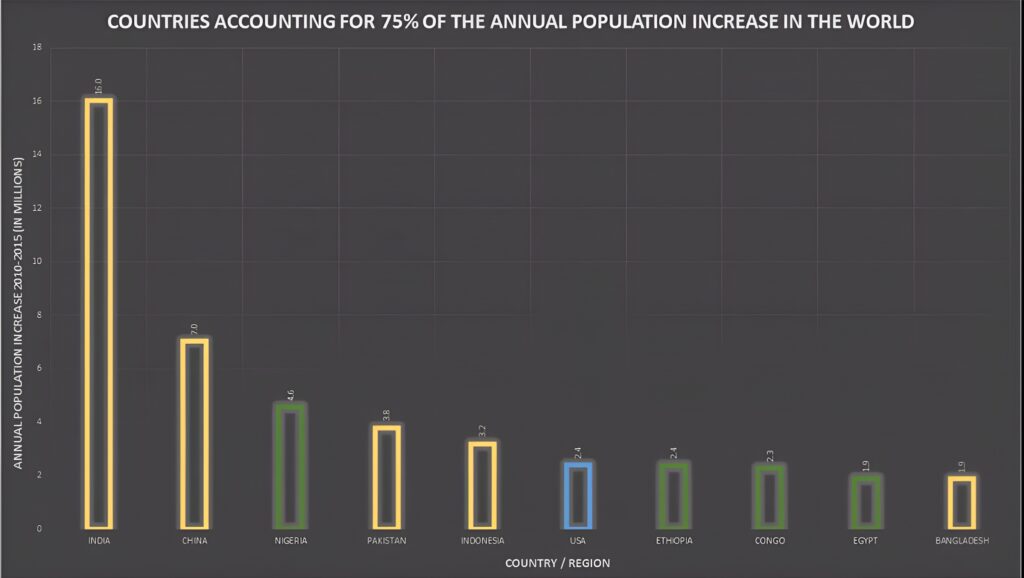
African countries such as Nigeria, Ethiopia, Congo and Egypt, have reached among the top countries accounting with an increasing annual population growth rate.
Annual Population Increase 2045-50
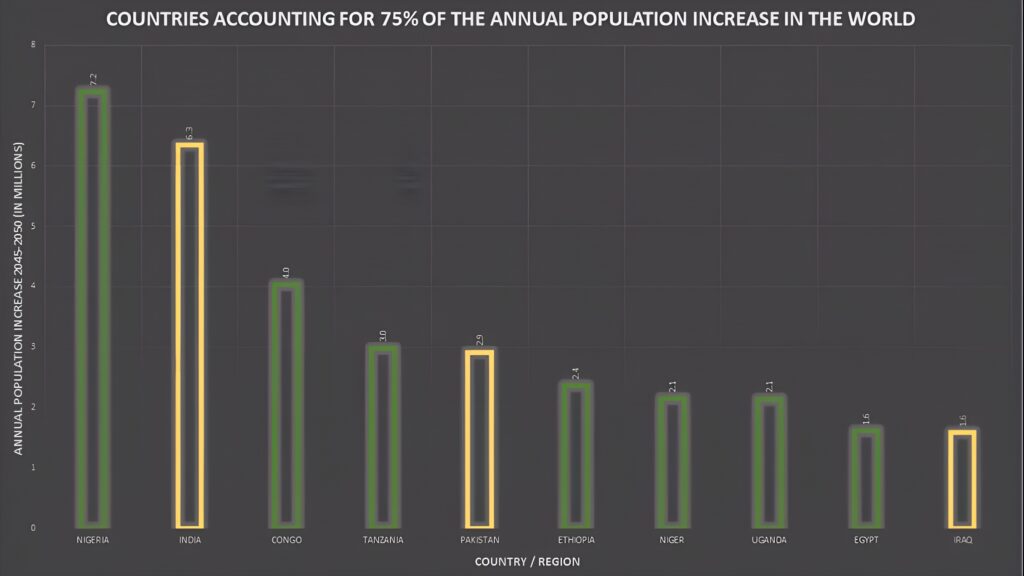
The above graph is an annual population increase projected for 2045-50. Here it can be seen that Asia and Africa are the most populous regions of the world, and account for most global population. It is projected that Nigeria will rank in top position with annual population increase up to 7.2 million and India will be in second position with annual population growth of 6.3 million. No continent except African or Asian countries is estimated to in the top categories.
Conclusion
It is predicted that by 2050, Asia’s urban population will almost double from 1.6 billion to 3 billion. Experts agree that, if the current growth rate continues, Africa’s population will double by 2050, making it home to 2.5 billion people and over a quarter of the world’s population.
The World Population Prospects 2019 report reveals that nine countries will account for more than half of the projected growth of the global population until 2050. These are India, Nigeria, Pakistan, the Democratic Republic of the Congo, Ethiopia, the United Republic of Tanzania, Indonesia, Egypt, and the United States of America (in descending order). It is estimated that India will surpass China as the world’s most populous country around 2027.
Urbanization has the potential to contribute to sustainable growth, but only if it is managed well. However, the speed and scale of urbanization pose challenges such as meeting the demand for affordable housing, viable infrastructure, basic services, and jobs, particularly for the urban poor who live in informal settlements near opportunities. Once a city is built, its physical form and land use patterns can be locked in for generations, leading to unsustainable sprawl. This puts pressure on land and natural resources, resulting in undesirable outcomes. Cities consume two-thirds of global energy and account for over 70% of greenhouse gas emissions. As cities grow, their exposure to climate and disaster risk increases, making them increasingly important in tackling climate change.
Therefore, it is crucial to build cities that are green, resilient, and inclusive. This requires intensive policy coordination and investment choices. National and local governments have an important role to play in shaping the future of their development and creating opportunities for all.


